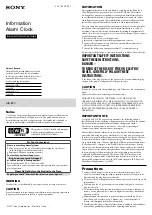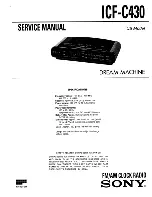
©
2005
Directed Electronics, Inc. all rights reserved
7
H1/6 GREY (-) bonnet input - zone 6
Connect this wire to the bonnet pin switch. If the bonnet is opened when the alarm is armed, this wire
will trigger the system. This wire can be programmed (Menu 2, feature 12 or the Bitwriter) for
normally open (default) or normally closed for connection to normally closed pin switches.
H1/7 — not used
H1/8 BROWN (-) horn output (200mA)
This wire is a low current output to a relay for the horn to sound when the system has been triggered.
It can be programmed to either pulse or latch on when the alarm is triggered.
H1/9 WHITE/BLUE 200 mA (-) channel output 3
This wire provides a (-) 200 mA output whenever the transmitter button(s) controlling Channel 3
is pressed. This output can be programmed to provide the following types of output (see
System
Features Learn Routine
section of this guide):
➤
➤
A vvaalliiddiittyy output will send a signal as long as the transmission is received.
➤
➤
A llaattcchheedd output will send a signal continuously when the Channel 3 button(s) is pressed and
released. The signal will continue until channel three is pressed again.
➤
➤
A llaattcchheedd//rreesseett w
wiitthh iiggnniittiioonn output works similar to the latched output, but will also reset
(output will stop) when the ignition is turned on and then off.
➤
➤
A 3300 ((6600,, 9900)) sseeccoonndd ttiim
meedd output will send a signal for 30 seconds when Channel 3 is pressed.
This output can be turned off during the 30-second period by pressing Channel 3 again. The
Bitwriter
TM
can program from 1 to 90 seconds in 1 second increments.
➤
➤
R
Reem
moottee ssttaarrtt output (refer to System Features Menu description for additional information).
H1/10 BROWN/BLACK
Unlock 87A (Normally Closed)
Refer to
Door Lock Harness Wire Connection Guide
section for instructions on connecting this
wire.
IMPORTANT!
Never use this wire to drive anything but a relay or a low-current input!
This transistorized output can only supply 200 mA, and connecting directly to a
solenoid, motor, or other high-current device will cause the module to fail.








































